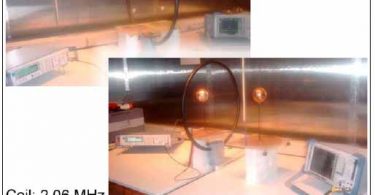ABSTRACT
Background:
Typhoid is a systemic infection caused by Salmonella Typhi transmitted mainly through faeco-oral route affecting males and females of all age groups throughout the year worldwide. It has become an important public health challenge in developing countries like India due to poor sanitation, lack of safe drinking water, low socio-economic conditions and increased number of multiple drug resistance cases.
The variability in the symptoms and the lack of highly sensitive and specific tests for the diagnosis of typhoid cases in developing countries causes delay in early diagnosis and treatment which results in increased mortality and morbidities associated with the disease.
Several homeopathic therapeutic medicines are available for the treatment of typhoid fever selected on symptom similarity by using the holistic and individualistic approach. Thus, the study was undertaken to assess the effectiveness of homeopathic treatment in typhoid fever and the leucocytic count variation associated with it.
Aim and objectives:
- To assess the effectiveness of homoeopathic medicines on leucocyte count variation with special reference to absolute eosinophil count in cases of typhoid fever.
- To assess the role of Eosinopenia as a diagnostic marker in typhoid fever.
- To develop a comprehensive plan for homoeopathic treatment and management of typhoid fever.
Methodology:
An open label, observational, prospective study design was adopted for the study at Government Homoeopathic Medical College & Hospital, Bhopal (MP). Patients fulfilling inclusion and exclusion criteria, reported in regular OPD’s and attached units of the institute by consecutive sampling were included.
Routine follow up was done at 3-5 days interval largely (or in between where necessary). A total number of 30 cases of different age groups, both sexes and religions presented with signs and symptoms of typhoid fever were included in the study.
All the 30 cases were followed-up for the minimum period of 2 weeks or more for the analysis of result. Assessment in each case was evaluated by gradation of post treatment score achieved in symptom score scale and leucocytes count variation
Conclusion:
Homeopathy was effective in reducing the intensity of signs and symptoms, early recovery, preventing the complications in typhoid fever and improving the leucocyte count in typhoid fever.
Keywords:
Homoeopathy, typhoid, total leucocytes count variation, eosinopenia.
INTRODUCTION
Typhoid fever is a multisystemic infection caused by Salmonella Typhi, usually through ingestion of contaminated food and water mostly by faecal – oral route. Typhoid affects people of all age groups of both the sexes throughout the year. [1]
An estimated yearly global burden of typhoid fever is approximately 27 million cases, with 200,000 – 600,000 deaths.[3] Typhoid has become important public health challenge for India, especially with the spread of antimicrobial resistance. [2] The high mortality of Multi Drug Resistant Typhoid Fever (12%) compared to chloramphenicol-sensitive typhoid fever (2%) appears to be related more to delay in initiating correct treatment than to increased virulence of the organism. [2]
The definitive diagnosis of typhoid fever is the isolation of salmonella from the culture of blood, urine, stool or bone marrow, but the delay of days or weeks in isolating the organism, previous use of antibiotic, and the availability of resources in developing endemic countries decrease its significance in early treatment of the diseases. [9]
Hematological tests are easily done and interpreted. Anemia, elevated erythrocyte sedimentation rate (ESR), thrombocytopenia, relative lymphopenia, elevated prothrombin time (PT), thromboplastin time (aPTT), and decreased fibrinogen levels are all observed, but lack specificity. [11]
Leucopenia is considered a key feature of typhoid fever, but studies have shown it to be present in only 20-25% of cases. [4] Study shows leucopenia with eosinopenia is distinctive features of typhoid, and can help to distinguish it with malaria, dengue or other febrile illness.
In the proper clinical settings absolute eosinopenia can give a strong clue to the diagnosis of typhoid fever and can be used as diagnostic marker in strongly suspected cases of typhoid fever to promptly initiate therapy particularly in setting of limited diagnostic resources. [4, 5, 10, 11, 12, 13]
As far as homoeopathic therapeutic medication is concerned; several remedies are available to treat typhoid fever that can be selected upon the theory of individualization and symptom similarity by using a holistic approach. Studies have shown that various homoeopathic medicines are capable of modifying the movement of human leucocytes in vitro. [6, 7, 8]
Scarcella D. observed in his study that the medication, Baptisia tinctoria and Echinaceae, appeared to increase the total leucocytes, monocytes and lymphocytes count, thus stimulating the body’s immune system. (Mckenne,1996)[7] Whereas in one study Baptisia tinctoria proved to be highly effective ultra dilute medicine for treatment of typhoid.
It was found that Baptisia administration possibly caused a salmonella-like reaction in the body as this extract produces an endogenous antibody similar to salmonella reaction by inducing the immune system by activating both T and B cells by the formation of antibodies. [8]
Homeopathy is a system of medicine that utilizes dynamic and potentized medicines in an individualized manner to treat the disease from its root cause. Homoeopathic medicines act on the body at the dynamic level of vital force and restore the deviated functions.
Homoeopathic medicines are prescribed on the basis of individual constitution, temperament, miasmatic analysis and have to be specific for every individual person. That is the reason a detailed history is required to customize the individualized treatment and its management. [4]
The study is intended to assess the effectiveness of homoeopathic medicines in treatment of typhoid, extent of improvement in the related symptoms of the patient, prevention of complication and to assess the role of homoeopathy in total leucocytes count variation associated with typhoid fever. Positive outcome resulting from this study could provide evidence for the use of non-toxic, harmless, cost-effective means of improving the patients having typhoid, or at the very least some of the symptoms of typhoid.
PATIENTS AND METHODS:
1. Study design:
Prospective, observational, open label study.
2. Study period:
18 months.
3. Study population:
- Study site: OPD & IPD of Government Homoeopathic Medical College & Hospital
(GHMC & H), Bhopal, Madhya Pradesh, India.
- Sample size: n = 30
3.3. Sample selection:
- Inclusion criteria:
- Diagnosed case of typhoid fever.
- Patients of either sex of all ages & religion.
- Subjects agree to give consent for participating in the study and comply with the
3.3.2. Exclusion criteria:
- Patients having complication of Typhoid fever, e.g. Intestinal perforation, haemorrage etc.
- Any significant disease or disorder (e.g. cardiovascular, pulmonary, metabolic, malignant, psychiatric, major physical impairment) or having history of alcohol, drug abuse or any other reason which in the opinion of the investigator, may either put the subject at risk because of participation in the study, or may influence the results of the study, or the subjects ability to participate in the study.
- Patients unlikely to comply with the trial
4. Study treatment:
Medicine: homoeopathic medicines on the basis of totality of symptoms after thorough case taking
- Potency & dose: has been selected following strict homoeopathic
5. Interrogation: As per the “Case Report Format”
- Follow up: It was aimed 3-5 days of time from the period of active interference. On reporting, the cases were followed up properly and results assessed on the basis of symptomatic improvement of typhoid patients measured by symptom’s score scale and the gradation of improvements in leucocytes count variation.
7. Records- Were maintained on “Case Report Format”.
8. Methods of tests / procedures: Detailed and thorough case taking of each and every case having typhoid fever.
§ Relevant clinical examination.
§ Evaluation of symptoms as per homoeopathic principles and framing the totality.
§ Inclusion and exclusion criteria will be fulfilled in selection of each and every case.
§ Analysis, evaluation and repertorisation of the totality of symptoms using Radar repertory taking help of Computer-aided (Digital) Repertory.
§ Final Selection of medicine after susceptibility, miasmatic inference and consultation with Homoeopathic Materia Medica.
§ On the basis of susceptibility, potency, dose and repetition will be done following strict homoeopathic principles.
§ General management which includes proper diet and regimen, hygiene and proper rest.
§ Laboratory investigations would be done according-
o Complete blood count with differential analysis of WBC by CBC cell counter.
o Absolute Eosinophilic count by eosinophil slide method by peripheral smear.
o Widal test by agglutinin slide and tube method.
§ Proper recording of detailed investigation finding along with measurement if applicable.
§ Timely review of homoeopathic prescription on the basis of response of patient.
- Safety variables: Any undesired / untoward event experienced by the subject recruited in the study is noted in the R.F. and assessed at the end of the study.
- Research Analysis: Outcome was assessed using self designed symptoms score scale according to frequently encountered signs and symptoms of typhoid fever and the changes in leucocytes count variation.
Symptomatic evaluation of typhoid patient:
It is measured by the score of post treatment score obtained in symptoms score scale after 15 days of treatment. Maximum score at the time of pretreatment was 12 which changes according with the response of treatment. Result was calculated by the gradation of post treatment score achieved as follows:
| No. | Post treatment score | Result |
| 1 | 0 – 2 | Recovered |
| 2 | 3 – 5 | Improved |
| 3 | > 5 | Not improved |
Assessment of leucocytes count variation was done on the basis of gradation of the following changes in the leucocytes count observed after 15 days of treatment.
| No. | Leucocytes count variation | Gradation |
| 1 | 0 – 500 | No variation |
| 2 | 501 – 1500 | Mild variation |
| 3 | 1501 – 3000 | Moderate variation |
| 4 | 3001 & above | Marked variation |
OBSERVATION AND RESULTS
In the present study 34 patients were enrolled, 4 dropped out, 30 patients completed the study Statistical analysis to test the significance of improvement were obtained through paired t-test and chi-square test which illustrate the impact of homeopathic treatment in reducing the intensity of sign and symptoms of typhoid fever and improving the leucocytes count in typhoid fever.
Out of 30 cases, 73.26% (22 cases) recovered from the sign and symptoms of typhoid. 19.98% (6 cases) shows improvement where as 6.67% (2 cases) reported no improvement. In context to leucocytes count variation after homeopathic treatment of typhoid fever, 36.63% (11 cases) reported with mild change, 49.95% (15 cases) had moderate changes, 3.33% (1 case) shows marked changes whereas 10% cases (3 cases) showed no changes.
Absolute eosinopenia was not observed in any case. Females 63.33% (19 cases) showed more prevalence of typhoid than males 36.67% (11 cases). Prevalence of typhoid fever in the age group of 21-30 years (36.67%), 31-40 years (23.33%), 11-20 years (16.66%), 0-10 years (13.33%), 41-50 years (6.66%) and 51-60 years (3.33%) was observed respectively.
DISCUSSION
The present study represents that homeopathic treatment shows improvement in the sign and symptoms of typhoid fever. This was evaluated by symptoms score scale and with the changes in leucocytes count before and after treatment. This work not demonstrated the co-relation between absolute eosinophilc count (A.E.C.) and the early diagnosis of typhoid fever.
This study shows that females were more prone to typhoid fever compare to males, higher preponderance of cases in urban than rural areas, and in winter season in compare to rainy or summer season. This study shows the effectiveness of homeopathic treatment in annihilation of typhoid fever and helps in reducing the intensity of the symptoms of typhoid fever and preventing the complications associated with it.
This study result goes with the other studies which show that homeopathic medicines are able to produce the changes in the leucocytes count. But it can’t produce any co-relation between the absolute eosinopenia at the early stages of this disease.
However, further studies need to be carried out to understand the finer nuances of the disease as taking into the consideration the variability in the presentation of the disease in terms of sign, symptoms, laboratory investigations and hematological changes and the life threatening complications a long term study should be conducted to ensure the impact of homeopathic medicines on the same.
As the incidence and prevalence of typhoid is high in this country, a larger sample size is required for better generalization and conclusion. Study could be more scientific if evaluation is done by changes in bone marrow culture and also if comparison could be made with a control group on conventional treatment. It was not possible in this study because of the limited resources available and time duration limited for one year.
After completion of study it can be asserted that homeopathy is effective in reducing the intensity of the signs and symptoms, early recovery, preventing the complication of typhoid fever and improving the leucocyte counts in typhoid fever.
CONCLUSION
A total 30 cases were selected for the study based on the inclusion and exclusion criteria. Among 30 cases 73.26% (22 cases) recovered from the sign and symptoms of typhoid. 19.98% (6 cases) shows improvement where as in 6.67% (2 cases) no improvement was found. It was observed from the study 36.63% (11 cases) shows mild change, 49.95% (15 cases) had moderate changes, 3.33% (1 case) shows marked changes whereas 10% cases (3 cases) showed no changes in leucocytes count after the homeopathic treatment of typhoid fever.
Absolute eosinophilc count was recorded in pre and post treatment status of all 30 cases though changes were found in A.E.C. but no absolute eosinopenia was found in any case. The study conducted highlights effectiveness of the homeopathy in the treatment of typhoid fever and the leucocytes count variations associated with the disease.
BIBLIOGRAPHY
- Fauci Anthony S.,Kasper Dennis L.,Longo Dan L.,Braunwald Eugene,Hauser Stephen L.,Jameson J. Larry.Harrison’s Principles of Internal Medicine.Vol-2,19th edition. U.S.A.: The Mc Graw-Hill Companies; p1050.p 349.
- API, Textbook of Medicine, 6th edition, page no 4.
- Grace D. Appiah, Michael J. Hughes, Kevin Chatham-Stephens https://wwwnc.cdc.gov/travel/yellowbook/2020/travel-related-infectious-diseases/typhoid-and-paratyphoid-faaever dated 22.2.20.
- Khosla SN, Anand A, Singh U, and Khosla A. Haematological profile in typhoid fever. Trop Doct 1995; 25:156-8
- Lokhandwala A, Athar S, Turrin NP. Role of absolute eosinopenia as marker of enteric fever: experience from a tertiary care hospital in the United Arab Emirates. Ibnosina Journal of Medicine and Biomedical Sciences. 2012 Nov 1;4(6):249
- Moss VA, Roberts JA, Simpson K. The action of “low potency” homeopathic remedies on the movement of guinea-pig macrophages and human leucocytes. British Homeopathic Journal. 1982 Apr; 71(02):48-61.
- Scarcella D. A study on the effect of a homoeopathic complex formula consisting of Baptisia tinctoria mother tincture and Echinacea purpurea mother tincture on circulating leucocytes (Doctoral dissertation, University of Johannesburg).
- Banerji, Pratip; Banerji, Prasanta; Das, Gobinda Chandra; et al.(2012) “Efficacy of Baptisia Tinctoria in the Treatment of Typhoid: Its Possible Role in Inducing Antibody Formation,” Journal of Complementary and Integrative Medicine: Vol. 9: Iss. 1, Article 15. DOI: 10.1515/1553-3840.15
- Gilman RH, Terminel M, Levine M, Hernandez-Mendoza P, Hornick r. relative efficacy of blood, urine, rectal swab, bone-marrow, and rose-spot cultures for recovery of salmonella typhi in typhoid fever. The Lancet. 1975 May 31; 305(7918):1211-1213
- Deshmukh CT, Nadkarni UB, Karande SC. An analysis of children with typhoid fever admitted in 1991. Journal of postgraduate medicine 1994; 40:204-7
- Anusuya B, Sumathi S. Haematological alterations due to typhoid fever in Mayiladuthurai area, Nagapattinam. Int J Res Pharma Pharmacotherap. 2015; 4(2):210-16
- Rana BS, Pradhan SK. Hematological parameters of Salmonella typhi and paratyphi culture positive patients from Kathmandu Valley, Nepal. Journal of Institute of Medicine, 2015; 37(3): 40 – 46
- Lalitha J, Vasanthi T, Malathi S, Ganesh R, Aparna V, Lakshmi M. Clinical Profile And Outcome Of Typhoid Fever In Children From A Tertiary Care Hospital
- Nash E.B, Leaders in typhoid fever.
- 15 Clarke HC. The Prescriber, London: The Homeeopathic Publishing Company Ltd 1952.
- Kent JT. Lesser writing, Address: typhoid fever. 1985:1985-7.
- Boennignhausen CMF, Lesser writing, typhoid fever, page 28
- Hahnemann Samuel, Organon of medicines, 6th edition, B. jain publisher (p) ltd.






